The 2014 Bald Head Island Photography workshop was a great success. We had a wonderful group of nine photographers who sustained their enthusiasm through a grueling schedule and the inevitable sleep deprivation that comes from working with natural light over several days.
I was very impressed by the progress everyone made over the course of the weekend. Most participants began the workshop only able to use their camera in automatic mode, and during the workshop they were able, for the first time, to create some great images using manual exposure control. I also really appreciated the way the more advanced members of the group were so willing to share their knowledge and help those just getting started.
The workshop began with a social and orientation on Friday evening just after sunset. I advised the participants that if they arrived on the island early it would be a great opportunity to photograph the nearby lighthouse in the late evening light while I was setting up our classroom.
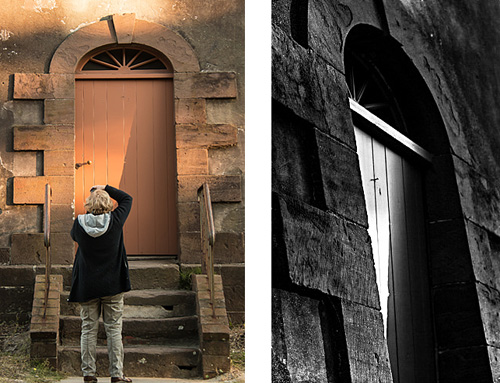
Maggie Zwilling made one of the best images of the workshop before we had even officially started. Kim Hawks photographed Maggie as she was working with the rapidly shifting late day light on the door of the lighthouse. Kim’s image on the left shows Maggie while she was hard at work exploring the subject, but also shows how the door appears in a literal sense. Maggie’s lovely image on the right shows a recognition of shape, texture, and light, independent of the meaning of the object. In other words, Maggie found a composition not bound by the logic of a door.
The next morning we all met in the dark before the first light of dawn to prepare for our morning field session in the salt marsh. I knew this was going to be a tough session since almost everyone was about to start shooting for the first time in manual mode. Learning to do this the first time is challenging enough without having to learn how to do it in the dark. But manual exposure skills are necessary for making good images in the rapidly changing, complex light of dawn. We gathered under a porch light so we could see our cameras, and I divided the group into Canon and Nikon users. Then, each group went about making all the necessary settings to their cameras for shooting low pre-dawn light. Fortunately, there were people in both the Canon and Nikon groups that knew how to make these adjustments and could help me get everyone ready to go. Once we were all set, I turned them loose into the marsh.
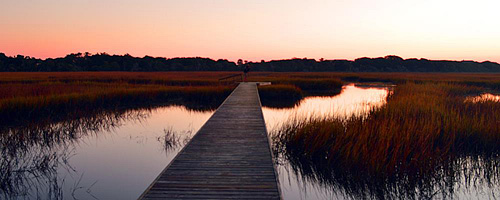
Making a great image can be difficult if your mind is focused on the technical aspects of photography, like setting a manual exposure for the first time. Despite this challenge most people made some very nice images. I particularly liked this composition by Linda Phillips created in the soft pastel light before sunrise, and one of her first manual exposures.
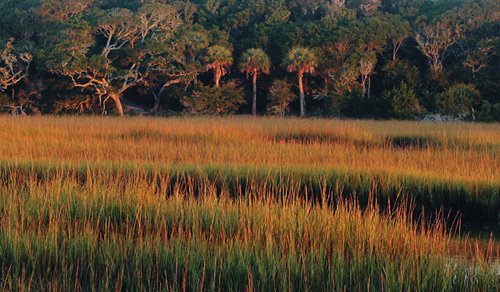
Robin Prak created this image from near the same place Linda created the previous image. The difference is Robin used a long telephoto lens after the sun had passed above the horizon. This morning was also Robin’s first experience with manual exposures.
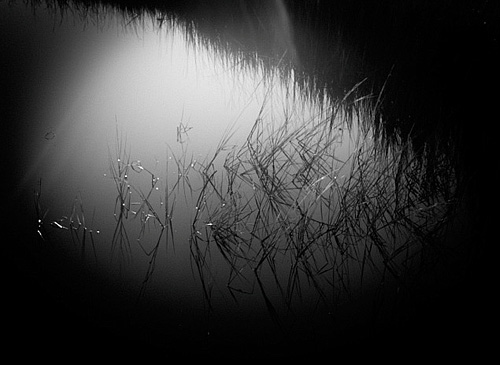
You can probably tell by now that Maggie has a very recognizable style, black and white, high contrast, and simply elegant compositions. Like her lighthouse door image, this one shows an appreciation of shape, texture, and light, independent of the meaning of the object. Yes, this is a salt marsh, but the image is not bound by the logic of a salt marsh. Her style is so recognizable I probably don’t even need to point out that she also shot the next image.
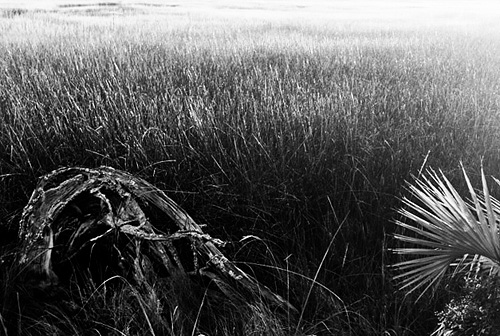
Guess who shot this view of the marsh.
There were a few wildlife photographers in the group. Wildlife photography is a difficult subject to learn if you are also just learning the technical side of operating your camera. You have to not only learn how to operate the camera, but you have to learn to operate it fast enough to keep up with your subjects.
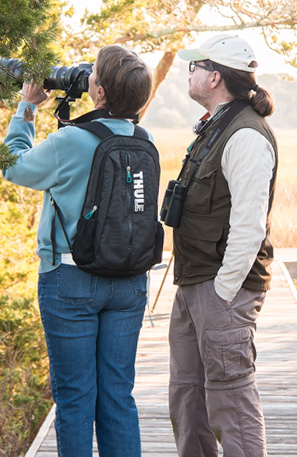
Kim made an image of me advising Robin about photographing small birds. Robin is a very fast learner and made several great wildlife images during the workshop.
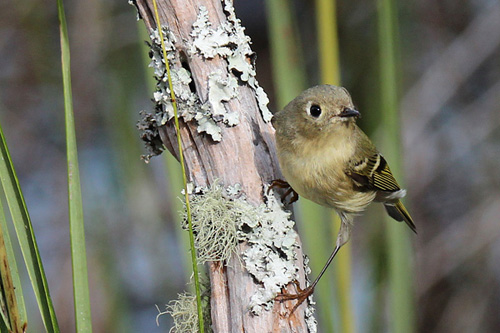
I led a nature walk for the Bald Head Island Conservancy the morning before the workshop that dealt with how to be more present and aware in nature so you can be observant enough to find interesting subjects. Since Robin attended that walk and was interested in wildlife photography, I also included how being fully present can help you create wildlife images. Ruby-crowned Kinglets are tiny, fast birds that don’t give you much opportunity to even point a camera at them, much less set exposure and focus. Over about half an hour I showed Robin how observing wildlife can result in noticing a repeating behavior pattern. This allowed Robin to create this excellent image by waiting for the kinglet to come to her, rather than a futile attempt to chase after the bird.
After the mid-day indoor image review session, we all met on the beach for a one mile hike north into the Bald Head Island Natural Area. The hike is well worth the effort to reach a place far from houses and roads, where you can find a great example of a wild maritime grassland habitat. I advised everyone not to be distracted by the sun as it approached the horizon, there are already plenty of photographs of that. Instead, I asked them to pay attention to what that low angle sunlight was doing to the foreground and make that the focus of their compositions. This was not an easy assignment; the maritime grassland has a subtle beauty.
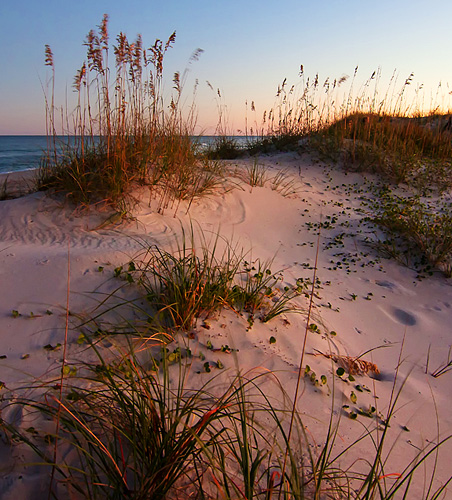
Just as the sun was at the horizon it cast a soft warm glow on everything. Kim captured that glow here by including both the warm sunlit sand and the cool sand in the shadows. These contrasting warm and cool tones are fleeting and easily overlooked. In a simple way, this composition is saying this light is beautiful, important, and worthy of attention.
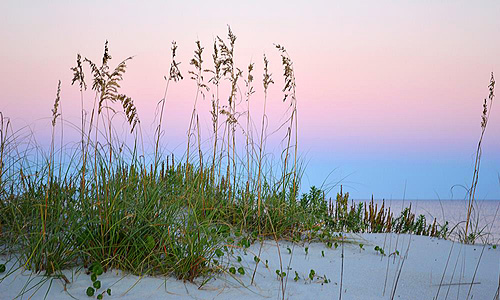
Many beginning nature photographers stop too soon and pack up once the sun has gone down. We kept working as the sun disappeared and the light became soft and pastel. Linda created this image after the sun dropped below the horizon, casting the Earth’s blue shadow into the pink sky.
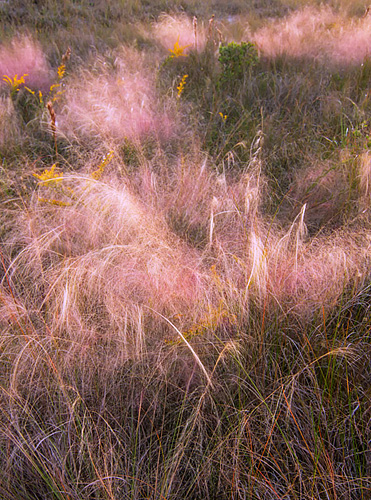
Kim used the soft pastel light after sunset to great effect with this patch of muhly grass. The soft light made the feathery tops of the muhly grass that much softer, and the pastel magenta colors of the sky brought out the magenta tones in the grass.
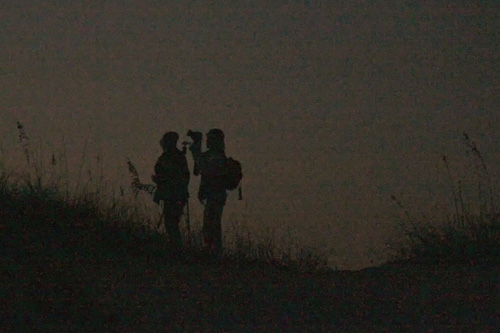
We squeezed every last bit of light we could out of that day. Robin demonstrated mastery of manual exposure skills when she was able to capture this image as we were wrapping up in the twilight. By increasing her ISO she was able to achieve a fast enough shutter speed to freeze the motion of the people with what little light was left.
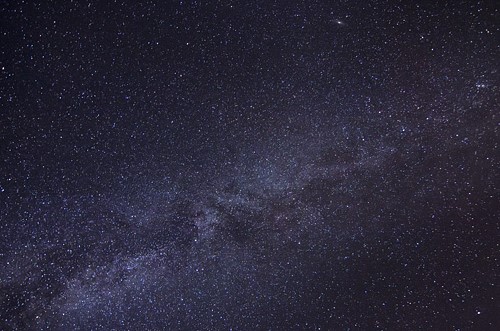
The last light of the sun had completely faded by the time we finished the mile hike back down the beach. I decided to offer a bonus astrophotography session since it was a new moon and the Milky Way was high in the sky. The night skies can be very impressive on Bald Head Island since it is far enough away from the light pollution of the cities on the mainland. Everyone was able to make images of the Milky Way, which is a subject that requires manual exposure skills. Kim shared this image where she not only captured the light of our own galaxy, but also the light of the Andromeda Galaxy, our nearest spiral galaxy neighbor. You can see the bright glow of Andromeda’s central core and the faint spiral arms by looking along the top edge of the photograph, right of center.
After a late night photographing the Milky Way, there was not enough sleep before we had to get up for the sunrise shoot on the beach at Cape Fear for our last field session. This time I wanted to put their manual exposure skills to the test. In the darkness just before dawn we reviewed setting a camera up for manual low light photography, then I gave everyone the assignment of photographing the crashing surf as the sky brightened from twilight to sunrise. I asked everyone to try many different shutter speeds until they found one that renders the waves in a pleasing way. There is no right answer, everyone has their own preference, but this assignment demonstrates one of the creative advantages of manual exposure. You can choose the shutter speed you like best and get that result every time. With a camera on automatic you have no say in the matter.
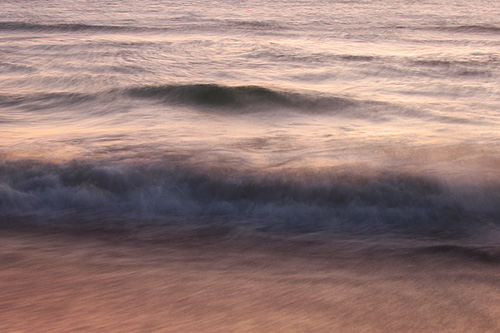
Robin made this image with a slow shutter speed during the soft pastel light before dawn. Slow shutter speeds render moving waves with a painterly effect.
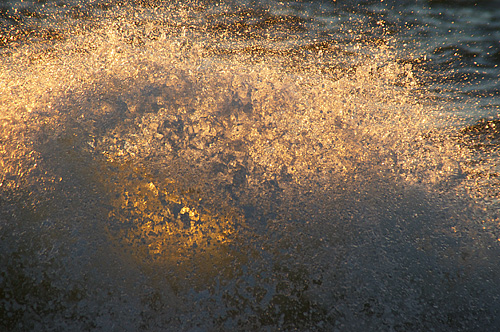
Audrey Dyer made this image of sunlight shining through a crashing wave with a fast shutter speed. A fast enough shutter speed will freeze motion to reveal the beauty of the order within the chaos.
This workshop was made even better by the generous support of the Bald Head Island Association who provided a room and AV equipment for our indoor image review sessions. I am very grateful to them and the participants who agreed to share a few of their photos for this blog post. I have little time for my own photography while teaching so it is great to have a record of what we did, and to be able to share it with those who were not able to join us. Thanks again to everyone that participated and helped make this weekend a success.

It was an awesome experience David. I can’t wait for the chance to attend your next workshop!
When will you offer another workshop at Bald Head?
The images are incredibly beautiful and I wish I’d been there!
Joy
The best way to stay informed about upcoming workshops is to either subscribe to this blog or follow my Facebook page. There will be at least one workshop on Bald Head Island in 2015 and I am hoping to be able to arrange two or three. We are still working out the details so I can not provide any dates quite yet.